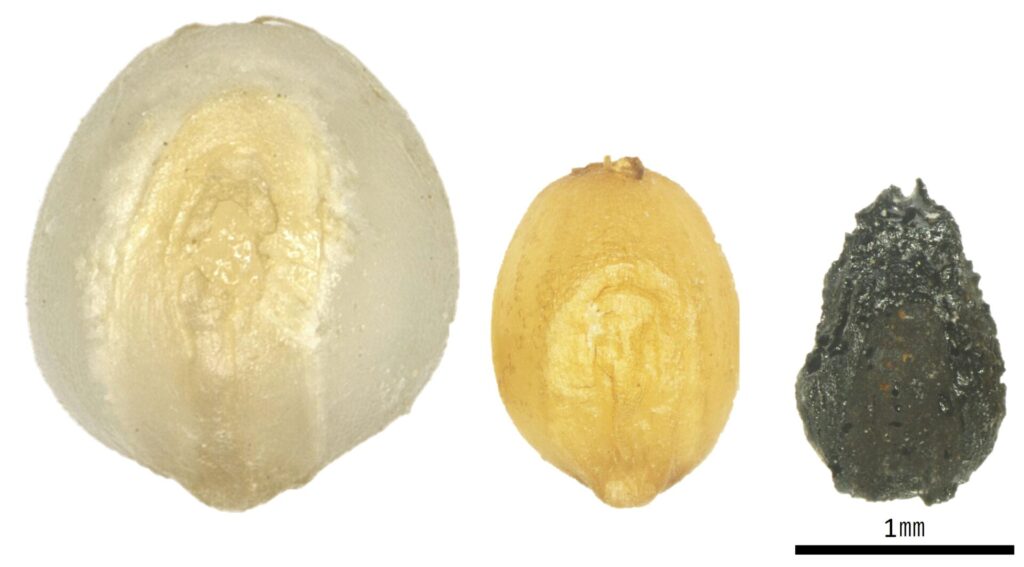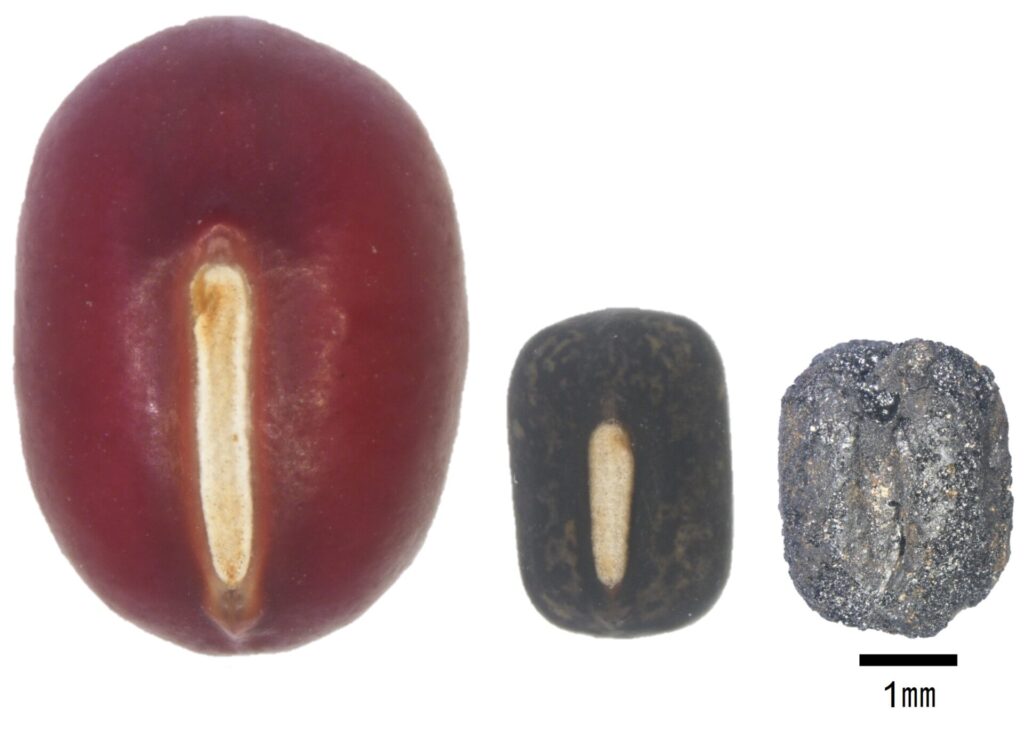Archaeobotany: Carbonized Seeds and Fruits
What kinds of plants did the Initial Jomon people, who resided in the Iyai rock shelter, utilize? Here, we discuss the use of plants by the people of that period, inferred from carbonized seeds excavated from archaeological sites.
The sediments found in the strata containing human skeletal remains in the rock shelter and the ash deposit from the terrace in front of the rock shelter contain numerous carbonized plant seeds, fruits, and woods. These residues are believed to originate from bonfires and cooking during that period, offering potential insights into the plants used for food, fuel, or rituals at the time. The recovery of carbonized plant seeds and fruits was facilitated using the flotation method. Due to their small size, few plant seeds and fruits are visible to the naked eye during excavation, with only larger fruits such as acorns and walnuts being noticeable. Many of the herbaceous seeds are only a few millimetres in diameter, necessitating flotation of sediments to comprehensively understand plant usage during the period. The flotation method involves placing sediments in water and stirring to float the lighter, carbonized seeds, in order to efficiently collect these minute seeds. To date, flotation has been performed on over a ton of sediment excavated from the Iyai rock shelter site.
Although we are still in the process of analyzing the flotation samples, we have thus far discovered many fragments of the nutshells of walnuts (Juglans mandshurica), chestnuts (Castanea crenata), and acorns (Quercus sp.) in most samples, suggesting extensive use of these nuts as carbohydrate and fat sources for the Iyai people Additionally seeds of dogwood (Cornus controversa), silver vine (Actinidia polygama), amur cork-tree (Phellodendron amurense), and hackberry (Celtis jessoensis) were found in numerous samples, likely employed as foods, spices, or medicinal resources. Although the usage of dogwood fruit is not extensively documented, it is probable that the seeds’ oil was utilized.
Particularly noteworthy is the use of herbaceous plants. Among herbaceous plants, seeds of the wild barnyard millet (Echinochloa crus-galli), wild azuki bean (Vigna angularis var. nipponensis), and wild soybean (Glicine max subsp. soja) occur frequently in the samples and are thought to have been important food sources for carbohydrates, proteins, or lipids. These findings are pivotal in understanding the evolutionary development of domesticated plants in the Japanese archipelago. The current domesticated plants, barnyard millet (Echinochloa esculenta), azuki bean (Vigna angularis var. angularis), and soybean (Glycine max subsp. Max), are crops that were domesticated from their respective ancestral wild species, wild barnyard millet, wild azuki bean, and wild soybean. Radiocarbon (14C) dating of these seeds was found to be consistent with the provenance stratigraphy. This serves as evidence for the use of ancestral wild species of domesticated plants in the early Holocene (about 10,000 years ago), one of the earliest instances globally, indicating that people in the Initial Jomon period were already aware of and utilized the advantages of wild species of barnyard millet, azuki bean, and soybean. This behavior may have ultimately led to subsequent domestication and provides significant evidence suggesting independent domestication of these crops in the Japanese archipelago.
Hiroo Nasu


